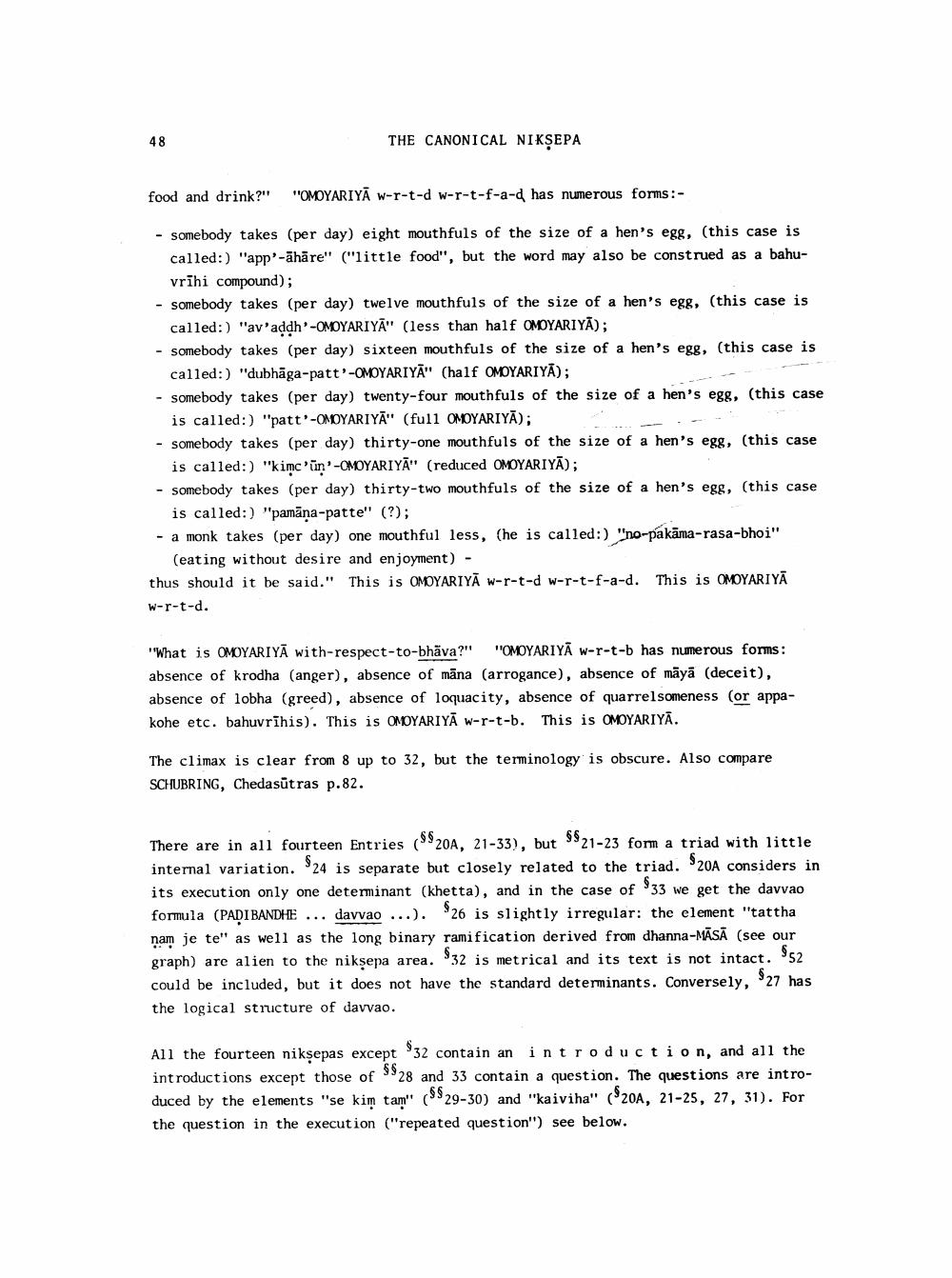________________
48
THE CANONICAL NIKSEPA
food and drink?"
"OMOYARIYA w-r-t-d w-r-t-f-a-d has numerous forms:
- somebody takes (per day) eight mouthfuls of the size of a hen's egg, (this case is called:) "app'-āhāre" ("little food", but the word may also be construed as a bahuvrihi compound);
- somebody takes (per day) twelve mouthfuls of the size of a hen's egg, (this case is called:) "av'addh'-OMOYARIYA" (less than half OMOYARIYA);
- somebody takes (per day) sixteen mouthfuls of the size of a hen's egg, (this case is called:) "dubhāga-patt'-OMOYARIYA" (half OMOYARIYA);
- somebody takes (per day) twenty-four mouthfuls of the size of a hen's egg, (this case is called:) "patt'-OMOYARIYA" (full OMOYARIYA);
- somebody takes (per day) thirty-one mouthfuls of the size of a hen's egg, (this case is called:) "kimc'un'-OMOYARIYA" (reduced OMOYARIYA);
- somebody takes (per day) thirty-two mouthfuls of the size of a hen's egg, (this case is called:) "pamāṇa-patte" (?);
- a monk takes (per day) one mouthful less, (he is called:) "no-pakāma-rasa-bhoi" (eating without desire and enjoyment)
thus should it be said." This is OMOYARIYA w-r-t-d w-r-t-f-a-d. This is OMOYARIYĀ w-r-t-d.
-
"What is OMOYARIYA with-respect-to-bhava?" "OMOYARIYA w-r-t-b has numerous forms: absence of krodha (anger), absence of mana (arrogance), absence of maya (deceit), absence of lobha (greed), absence of loquacity, absence of quarrelsomeness (or appakohe etc. bahuvrihis). This is OMOYARIYA w-r-t-b. This is OMOYARIYA.
The climax is clear from 8 up to 32, but the terminology is obscure. Also compare SCHUBRING, Chedasūtras p.82.
There are in all fourteen Entries ($$20A, 21-33), but $$21-23 form a triad with little internal variation. $24 is separate but closely related to the triad. $20A considers in its execution only one determinant (khetta), and in the case of $33 we get the davvao formula (PADIBANDHE... davvao ...). $26 is slightly irregular: the element "tattha nam je te" as well as the long binary ramification derived from dhanna-MĀSĀ (see our graph) are alien to the nikṣepa area. $32 is metrical and its text is not intact. $52 could be included, but it does not have the standard determinants. Conversely, $27 has the logical structure of davvao.
All the fourteen nikṣepas except $32 contain an introduction, and all the $$ introductions except those of 28 and 33 contain a question. The questions are introduced by the elements "se kim tam" ($$2 $$29-30) and "kaiviha" ($20A, 21-25, 27, 31). For the question in the execution ("repeated question") see below.




